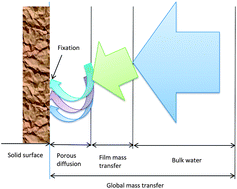Analysis of global and sequential mass transfers for the adsorption of atrazine and simazine onto granular activated carbons from a hydrodynamic column
Abstract
The presence of micropollutants, particularly

* Corresponding authors
a
Institute of Environmental and Water Resources Management, Water Research Alliance, Universiti Teknologi Malaysia, 81310 UTM Skudai, Johor Bahru, Malaysia
E-mail:
fulazzaky@gmail.com, fulazzaky@utm.my
Fax: +6075531575
Tel: +6075531702
b Laboratoire de Chimie Analytique Bio-organique et Environnement, Université de Pau et de Pays de l’Adour, Avenue de l’Université, 64000 Pau, France
The presence of micropollutants, particularly

 Please wait while we load your content...
Something went wrong. Try again?
Please wait while we load your content...
Something went wrong. Try again?
M. A. Fulazzaky, Anal. Methods, 2012, 4, 2396 DOI: 10.1039/C2AY05467A
To request permission to reproduce material from this article, please go to the Copyright Clearance Center request page.
If you are an author contributing to an RSC publication, you do not need to request permission provided correct acknowledgement is given.
If you are the author of this article, you do not need to request permission to reproduce figures and diagrams provided correct acknowledgement is given. If you want to reproduce the whole article in a third-party publication (excluding your thesis/dissertation for which permission is not required) please go to the Copyright Clearance Center request page.
Read more about how to correctly acknowledge RSC content.
 Fetching data from CrossRef.
Fetching data from CrossRef.
This may take some time to load.
Loading related content
